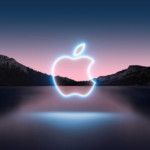
Preliminary Technicals 🧮
Trend Analysis: 🔎 Apple’s recent decline, juxtaposed with its position relative to the 50-day moving average, hints at a potential short-term bearish phase. The 50-day moving average started at $185.73 on September 12th and ended at $181.27 on September 29th, indicating a downward trend in the stock price during this period. However, its closeness to the 20-day moving average, as indicated by the Bollinger Bands, suggests that this downtrend might be moderate rather than severe.
RSI Outlook: 💪
The RSI, currently standing at 33.82 as of September 29th, remains in the neutral zone. A downward movement towards the 30 mark might indicate an oversold condition, hinting at a potential rebound. On the other hand, an upward shift towards 70 could signal an overbought scenario, pointing to a possible price correction.
Bollinger Bands Perspective: 🩹
Apple’s stock is currently trading within a range, as indicated by its position between the upper and lower Bollinger Bands. The stock price mostly stayed within the Bollinger Bands, indicating that there were no significant price breakouts. A surge above the upper band ($187.64 on September 29th) might signify an uptrend continuation, while a descent below the lower band ($166.37 on September 29th) could indicate further downward momentum.
Volume Analysis: ⚖️
Significant trading volume peaks on August 4 and September 7 highlight considerable investor interest. A surge in volume paired with a price hike could be bullish, while a volume spike with a price decline might indicate increased selling pressure.
Volatility Insight: 🚀
The stock’s 21.55% volatility over the past three months indicates notable price fluctuations. Continued or increased volatility suggests potential short-term price swings, presenting both risks and opportunities.

Fundamentals 🧱
Macroeconomic Landscape: 🏛️
The broader market dynamics, characterized by global geopolitical tensions, trade uncertainties, and potential interest rate hikes by central banks, mirror Apple’s 21.55% stock price volatility. Given their high valuations and reliance on debt, tech stocks like Apple are sensitive to such macroeconomic changes (however Apple’s capital strategy has proven to be quite effective we will explore later on).
Supply Chain Considerations: 🔗
Apple’s supply chain, like many global tech giants, has been under significant strain due to various factors which could be the leading factor behind the 10% decrease in stock price over the last two quaters.
- Semiconductor Shortage: The ongoing global semiconductor shortage has been a major challenge for tech companies, including Apple. Semiconductors are vital components in Apple’s products, from iPhones to MacBooks. A shortage in these chips can lead to production delays, limited product availability, and increased costs.
- Pandemic-Induced Disruptions: While the pandemic’s immediate effects have waned, its lingering impact on the global supply chain is still evident. Factory shutdowns, labor shortages, and transportation bottlenecks from the pandemic era have had a cascading effect, leading to delays and disruptions.
- Production Challenges: Apple has faced specific production challenges related to its iPhone 15 Pro Max, particularly concerning its upgraded Telephoto camera system. The tetraprism camera module with up to 5x optical zoom has been a significant supply bottleneck. To address this, Apple has made adjustments to its production lines and specifications to boost the supply of the device. Source
- Geopolitical Tensions: Apple’s supply chain is global, making it susceptible to geopolitical tensions. For instance, reports suggest that Chinese state-owned enterprises have considered bans on the use of iPhones by their employees, which could impact Apple’s sales and supply chain dynamics in one of its largest markets.
- Product-Specific Supply Chain Issues: Apple’s latest product, the Vision Pro, has generated both excitement and skepticism in the market. While Apple remains optimistic about its prospects, renowned market analyst Ming-Chi Kuo offers insights into potential supply chain challenges that could impact its availability and sales. Source
Product Lifecycle: 🔁
Apple’s product lifecycle is a crucial determinant of its stock performance, with major product launches often driving investor interest and stock price movements. Over the past quarter, the absence of significant product innovations from Apple might have contributed to the observed 10% stock price decline. This could be indicative of several factors:
- Uncertain Launch Date of New Products: Apple enthusiasts and investors alike often anticipate the company’s annual product launches. A report suggests that Apple is preparing to release new 14-inch and 16-inch MacBook Pro models with more power-efficient mini-LED displays before the year ends. These models are expected to have enhanced brightness without consuming more power, aiming to improve battery life. However, the timing of this launch remains uncertain, with some speculating a release next year.
- Recent Updates: Apple had already updated the 14-inch and 16-inch MacBook Pro with M2 Pro and M2 Max chips earlier in the year. Given this recent update, the market might be viewing another imminent launch with skepticism.
- Competitive Landscape: Apple’s product launches often face stiff competition from rivals. For instance, Google recently impressed the market with its Pixel 8 Pro launch, which boasts several new features and advancements. Such launches from competitors can overshadow Apple’s product announcements, influencing investor sentiment.
- Market Saturation: Apple’s dominant position in several of its product categories means that it faces market saturation challenges. Without significant innovations or entirely new product categories, incremental updates might not generate the same level of excitement among consumers and investors as before.
- External Factors: Broader market dynamics, such as global supply chain disruptions, can also impact Apple’s product launch timelines and strategies. For instance, supply chain issues might delay product releases or limit their availability, affecting stock performance.
Competitive Landscape: 🥊
- Google’s Dominance: Google’s overwhelming presence in the search engine market, with a staggering 90% market share, has been a point of contention. Such dominance can potentially influence the dynamics of the tech ecosystem, affecting companies like Apple that have their own suite of services and products.
- Apple’s Relationship with Google: Behind the scenes, there have been power struggles preventing rivals like Microsoft’s Bing from expanding. Apple plays a pivotal role in this tech battle royale. Microsoft was even willing to hide the “Bing” brand to secure the default search engine position on Apple devices. This underscores the lengths to which competitors are willing to go to challenge Google’s dominance and highlights the immense power Apple wields in shaping user preferences and the competitive landscape.
- Exclusive Content Deals: Google’s strategy of striking exclusive content partnerships with publishers has been a point of concern. Such exclusive agreements can place barriers in the way of potential competitors, especially when it comes to amassing vast content libraries essential for training artificial intelligence models. This could further solidify Google’s market control and influence the broader tech landscape in which Apple operates.
- Impact on Innovation: The U.S. Justice Department has accused Google of abusing its market share to hinder competition and stifle innovation. Such practices can have a cascading effect on the tech industry, potentially limiting the scope for innovation and affecting companies like Apple that thrive on continuous innovation.
- Apple’s Position: Apple’s strategic decisions, such as its agreements with search engine providers, can make or break competitors. As Satya Nadella, Microsoft’s CEO, pointed out, tech giants like Apple have the power to “king-make,” indicating that their choices can significantly shape the competitive landscape.
Operational Challenges: 🌋
- Data Privacy and Regulatory Challenges: Apple, like many tech giants, has had to navigate the complex terrain of data privacy regulations, especially in Europe. The European Union’s stringent privacy laws have prompted companies like Meta (formerly Facebook) to consider alternative revenue models, such as subscription-based services, to comply with these regulations. Apple’s adherence to data privacy norms, while commendable, can also introduce operational complexities and potential revenue impacts.
- App Store Policy in China: Apple has had to make significant adjustments to its App Store policies in China, one of its largest markets. The company now requires new apps to show proof of a Chinese government license, a move that aligns Apple more closely with local regulations but could also limit the diversity and innovation of apps available in the Chinese App Store. This adherence is seen as a strategic move to maintain a positive relationship with Chinese authorities, especially given the backdrop of ongoing U.S.-China tensions.
- Supply Chain Disruptions: Apple’s supply chain has faced disruptions, as evidenced by incidents like the fire at the Pegatron factory in India, which halted the assembly of iPhones. Such disruptions can have immediate operational impacts and potential medium-term effects on product availability and sales.
- Software Challenges: Apple’s software updates, while aimed at enhancing user experience and security, have sometimes been perceived as planned obsolescence. For instance, in 2018, Apple faced fines from Italy’s competition authority due to software updates that allegedly degraded the performance of older iPhones, pushing users to upgrade.
- Tax and Financial Practices: Apple’s financial practices, especially concerning tax strategies in regions like Ireland, have drawn scrutiny. While such strategies are legal, they can sometimes be perceived as capital flight, diverting funds that could otherwise contribute to public goods in regions where Apple operates. Such practices can influence public perception and potentially invite stricter regulatory oversight.
- Environmental Stewardship: Apple’s ‘Mother Nature’ campaign has positioned the company as an environmental steward. However, while Apple has made significant strides in meeting its environmental targets, it’s essential to consider the company’s entire operational history. Past environmental transgressions, especially concerning its supply chain in regions like China, provide a more nuanced picture. Apple’s efforts in recycling and material reprocessing, though commendable, are also influenced by business considerations, such as controlling inventory and hedging against material price volatility.
Final Thoughts: 🧠
Apple’s stock performance over the past three months is a reflection of both global economic challenges and company-specific operational factors. The 10% decline, along with a 21.55% volatility, underscores Apple’s susceptibility to broader market dynamics and its operational strategies. As Apple remains a tech industry powerhouse, investors should keep a close eye on macroeconomic indicators, Apple’s strategic initiatives, and the competitive landscape to make well-informed decisions.
Integrate information about capital structure.

Thanks For Reading, Leave a like or comment to for a healthy discussion.
The finsignal team.


